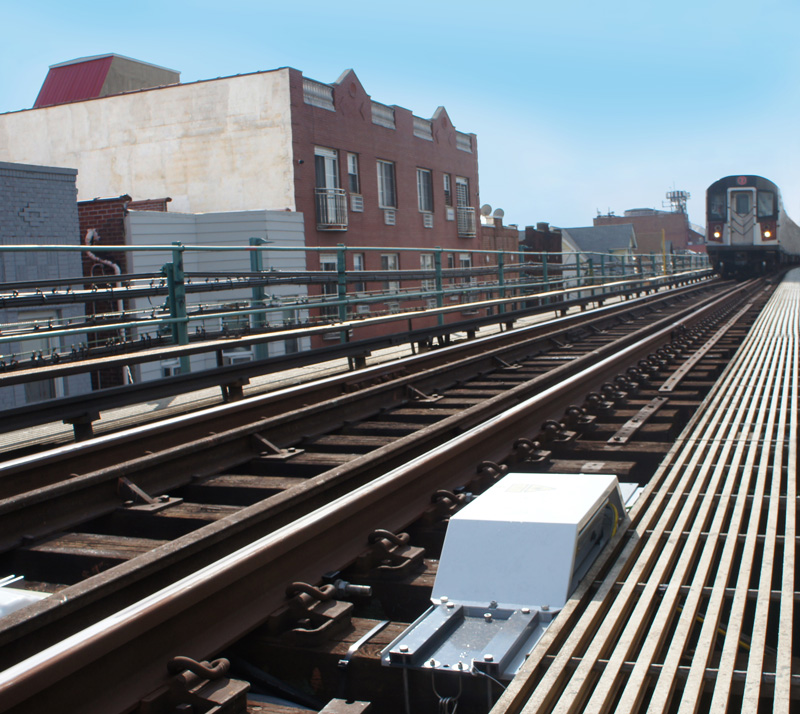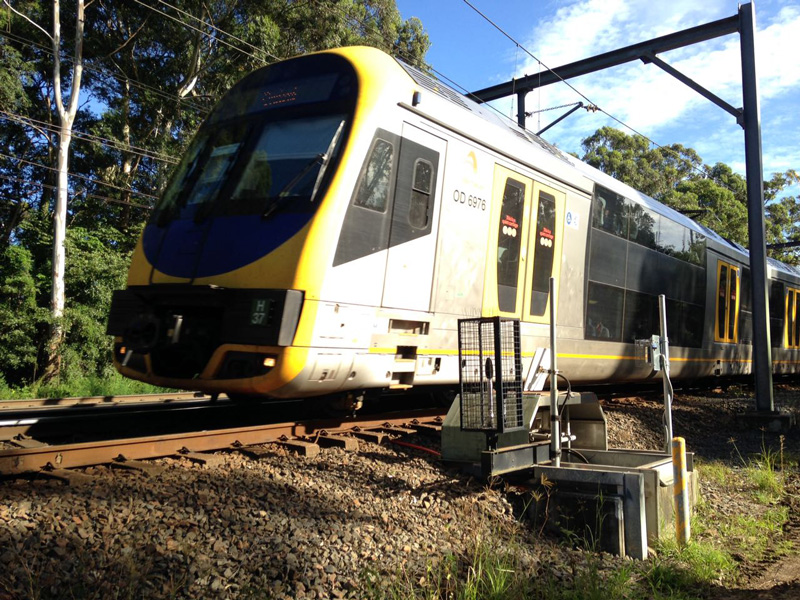The TBOGI Technology
TBOGI wayside systems measure the tracking behaviour (geometry) and tracking stability (hunting) of wheelsets and bogies.
TBOGI systems are wayside technology, installed next to the track, outside the clearance envelope. They are installed at trunk points of a network (on straight track), where the system can watch traffic going at speed. This makes TBOGI a cost-effective method of capturing the state of all rolling stock and trending it over time to know when – and why – the costliest issues are emerging.
Various wayside systems monitor the condition of specific bogie components – such as wheel profiles, hot bearings or broken springs – but TBOGI goes further to identify why these components are wearing out or defective. For example, what is the point of repeatedly reprofiling a wheelset, when the underlying issue keeps wearing out the same wheels? Or replacing a hot bearing when the underlying issue simply means that the new bearing will overheat again in due course? TBOGI identifies defects, and points maintenance to the causal component(s) that may be out of sight.
Identifying causality means that targeted action can be taken, and the cycle of repeat maintenance can be broken. Identifying the underlying cause breaks the wear/cost cycle, for both the rolling stock and the rail infrastructure.
Whether monitoring only a small fleet of wagons, or thousands, TBOGI ensures optimal performance.
There are two types of TBOGI systems:
- TBOGI-TR: Bogie Condition Monitor for transit and metro railways
- TBOGI-HD: Bogie Condition Monitor and Hunting Detector for freight and heavy haul railways

Reduce Wheel Wear Rate
Degenerative defects can be self-feeding. Asymmetrical wear patterns on wheelsets increase the stress on bogie components, and accelerates the loss/failure of material from the wheels.
TBOGI measures this increase in the wear regime at the wheel-rail interface.
Railways using TBOGI report significant increases in the lifespan of wheels and other bogie components (bearings, brakes, suspension, etc.). By using TBOGI data to reduce the wheel wear rate, other bogie components are subsequently under significantly less stress.
Reduce Rail Wear Rate
TBOGI detects defects that compromise the wheel-rail interface. This underlies accelerated wear and RCF to the rail as well.
- Tracking Position defects result in head checking and gauge-corner cracking, as well as rail head cracking from shelling and longitudinal fatigue.
- Angle-of-Attack defects result in intermittent crown wear as lateral material flows, lateral fatigue cracking that can lead to rail breaks, and surface breaking cracks that can develop into rail squats.
- Hunting defects result in a combination of wear patterns, particularly repeat flange impacts and scrubbing wear actions against the rail.
The above effects on the rail network are usually most pronounced through curves but manifest throughout the network. By addressing the more severe TBOGI defects, railways can significantly reduce grinding and rail replacement.
Improve Safety
Railways using TBOGI have significantly reduced derailment risk.
TBOGI identifies many risks that not identified by other monitoring systems.
Prior to derailment, high-risk TBOGI defects inflict major RCF and wear at the wheel-rail interface. The benefits of intervention are therefore two-fold.

We can train our technology to help them to detect and prevent their issues
Reduce Service Interruptions
TBOGI accurately trends bogie condition, and because these metrics often precede many other defects, the data reduces unplanned maintenance events.
TBOGI Features
- Laser-based system gathers accurate measurements between 0-300 km/h.
- TBOGI-TR modules can be installed in tunnels and other metro environments that have little trackside space.
- System does not require a special track layout.
- System is installed at a safe distance from passing trains, and does not interfere with track maintenance work.
- Accurate measurements, regardless of weather, train configuration, and rail lubrication conditions.
- Lateral instability (hunting) measured using standard units (millimeter displacement) rather than a meaningless index.
- System is simple to install and maintain.
- Systems proven to be railroad-tough, highly reliable, and cost-effective.
Contact Us
Wayside Inspection Devices (WID)
20, rue de la Cooperative
Rigaud, QC J0P 1P0, Canada
Tel: +1 450 206 0681
Website: www.wid.ca
Email: info@wid.ca